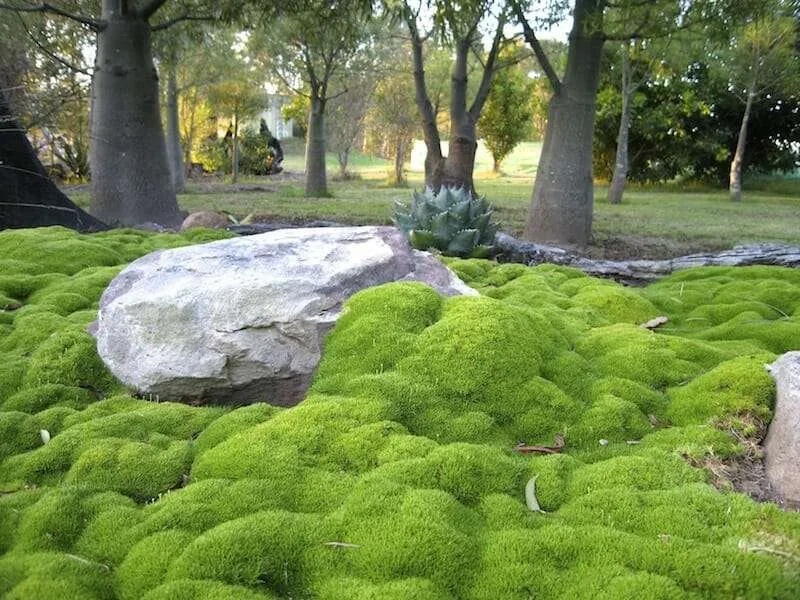Strawflower, Xerochrysum bracteatum
For some reason I imagine the Ingalls from Little House on the Prairie growing this flower. Maybe they would’ve tucked a few stems into their bonnets or decorated baskets with them. I have no real reason to explain the association other than the fact that these daisy-like flowers surprisingly appear dried even when fresh on the stem: the flowers seem aged and vintage from the start. With its stiff, paper-like petals, it even feels dried.
If your curiosity is piqued, read on: the strawflower is a cinch to grow so you can add this curious cutie to your own garden with ease. (Instructions on adding it to bonnets and baskets not included.)

Prized by gardeners who like unique, un-thirsty, and undemanding flowers, and by floral designers who want long-lasting cut flowers, strawflowers are a dependable annual or perennial (depending on where you live). Coming in a rainbow of bright shades including white, yellow, orange, pink, red, and purple, this flower will bloom almost nonstop from early summer until fall, especially if you routinely deadhead the spent flowers and don’t allow them to set seed.
Native to Australia and in the Aster family, some strawflowers grow to about 15 inches high while taller varieties can soar to 5 feet. If you grow the taller types, you may need to add a support system to keep them upright. At my local nurseries, I usually find the smaller varieties and have to buy the more stately ones (better for cutting because of the longer stems) through online resources.
As an interesting side note, because the flowers hold on to their shape and color long after being cut, strawflowers are said to symbolize immortality and are commonly known as ‘Everlasting’. It is also reported that Egyptians used strawflowers to decorate their god’s statues.
Favorite varieties:
‘Cottage Yellow’, ‘Cottage Pink’ and ‘Cottage White’, all growing to only 12″ tall and wide.’King Size Raspberry Rose’ grows taller to 3′ tall and ‘Sultane Mix’ pumps out varying hues and grows to 36-40″ tall.
Cheat Sheet

- Being totally heat-tolerant, strawflowers are the perfect addition to a sunny perennial bed.
- Also an excellent choice for cutting gardens. These flowers, either fresh or dried, make striking, long-lasting additions to bouquets, mixed arrangements, or solo in vases.
- You won’t be the only one appreciating these flowers; bees and butterflies adore them, too.
- Deer, luckily, seem to leave this flower alone.
- Try growing this flower in a container mixed with other sun-loving, low-water favorites like Salvias and Verbenas.
Keep It Alive

- Plant in full sun for best color and flower power.
- Strawflowers appreciate well-draining soil, so add compost to aid in your soil’s structure if it seems bogged with clay. Avoid overly rich soil, though, as it will cause your plant to become floppy.
- Water only when the soil feels dry. Overly wet soil or saturated foliage could be the kiss of death for these cuties. Drip irrigation is the best for them.
- Needing good air circulation to stay healthy and mildew-free, be sure to give your plants enough space and avoid crowding them.
- Luckily this plant is easy to grow from seed. At the end of the season, leave some blooms on the plant. The center will dry out and produce dandelion-like seeds. Carefully lift the seed parachutes off the head and you’ll see the tiny dark seeds. When the danger of frost has passed and the soil is warming up, directly sow some seeds into your soil. Pro Tip: Sprinkle seeds on top of the soil and gently water in. You can lightly press the seeds into the soil but don’t cover them as they need light to germinate. Space seeds about 12 inches apart.
For more on drought-tolerant plants, see:
- Flavorful and Fragrant: 5 Top Drought-Tolerant Herbs to Plant Now
- 11 Ideas to Steal from Drought-Tolerant Gardens












Have a Question or Comment About This Post?
Join the conversation